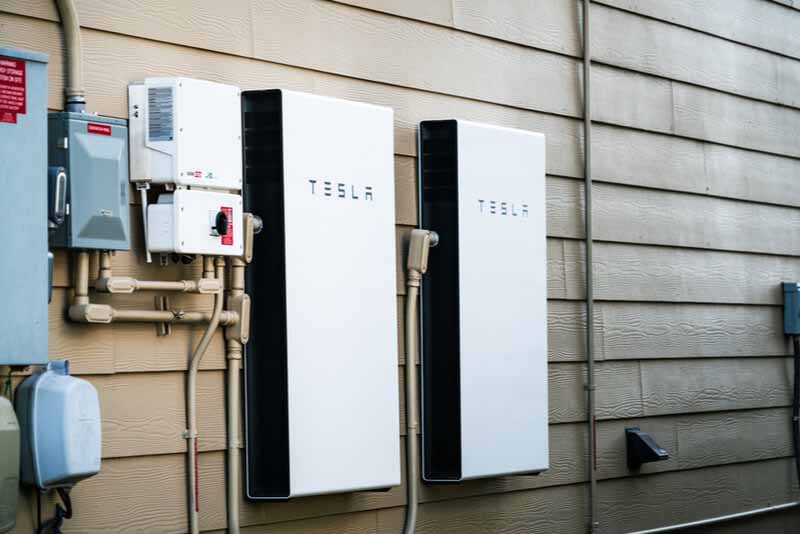Tesla Powerwall
The Tesla Powerwall has transformed how people look at solar batteries from being a just a talk about the future to a real thing right now. Tesla’s rebranding of residential-use batteries is within their legacy of reimagining present solutions. Tesla’s battery might depict the very first time in history which daily homeowners are extremely thrilled about the capability of storing energy in their house. The Powerwall, merged with the fascinating Tesla Solar Roof, are both future cornerstones of sustainable energy.
So how exactly does the Tesla Powerwall work?
The Tesla Powerwall pairs perfectly with solar power systems, particularly if your utility has minimized or eliminated net metering, placed time-of-use rates, or implemented demand charges. Setting up a storage solution such as the Tesla Powerwall along with a solar energy system enables you to sustain a regular power supply throughout the day or night, so long as you store sufficient power from the panels at the time sun is out.
As with many different home battery items, the Tesla Powerwall is sized for day-to-day use in your home and it is usually matched with a solar panel system. Whenever your solar panels generate more electrical power than you should use in your house, you could store the extra electricity inside the battery system rather than transmitting it back to the grid. Later on, in the event that your panels aren’t generating sufficient electricity to meet your home’s requirements, you may use the electricity held in your battery rather than purchasing it from your utility provider.
What is the cost of Tesla Powerwall in 2020?

By May 2020, the price of the Powerwall is $6,500, add-on hardware is $1,100 and Tesla estimates installation expenses to be in between $2,000 – $3,000. Meaning a complete installed expense is about $9,600 – $10,600 just for one Powerwall.
The price for supporting hardware is around $1,100 no matter whether you’ve got a single or several Powerwalls. Hence the price for each Powerwall is a little less when you have over one.
What amount of power does the Powerwall battery supply?
The Powerwall includes a storage capability of 14-kilowatt-hours (kWh) of electricity, which 13.5 kWh is usable. It’s about 50 % of the standard US home’s every day consumption.
What’s the Tesla Powerwall life expectancy?

Tesla Powerwalls have a 10-year limited warranty. What this means is your Powerwall battery will probably survive no less than ten years. Simply because lithium-ion battery storage technology remains fairly new, it’s unclear how precisely long a Powerwall, or any lithium ion battery, can last. According to what’s known regarding lithium-ion storage, it’s likely that the way you utilize your Powerwall system will decide how much time its lifespan would be.

For example, if you are using a Powerwall as a primary power source, it will probably survive ten years. However the constant use may cause stress in the system and reduce the life of the battery. In case you only utilize the Powerwall to power your house overnight, it could possibly last somewhere from ten to twenty years. Whenever utilized just for emergency power, a Powerwall can last more than twenty years.
What four factors which make the Tesla Powerwall solution shine being the best existing solar battery storage solution for home energy storage?
Cost at about $10,000 set up for 13.5 kilowatt hours (kWh) of functional storage. It’s a fairly great value granted the very high cost of solar energy storage. It’s still no the incredible return on investment, however a lot better than its peers.
Time-based controls enable you to reduce the expense of electricity coming from the grid on the day whenever you encounter time-of-use (TOU) electricity billing. Tesla’s mobile app appears better than rivals when it comes to its functionality and overall simplicity of use.
Built-in battery inverter as well as battery management system are part of the cost. The battery inverter needs to be bought separately with numerous other solar batteries.
Smart software-controlled design and battery cooling system. Tesla is apparently heading the pack when it comes to controls to make sure both safety and more intelligent functionality.
